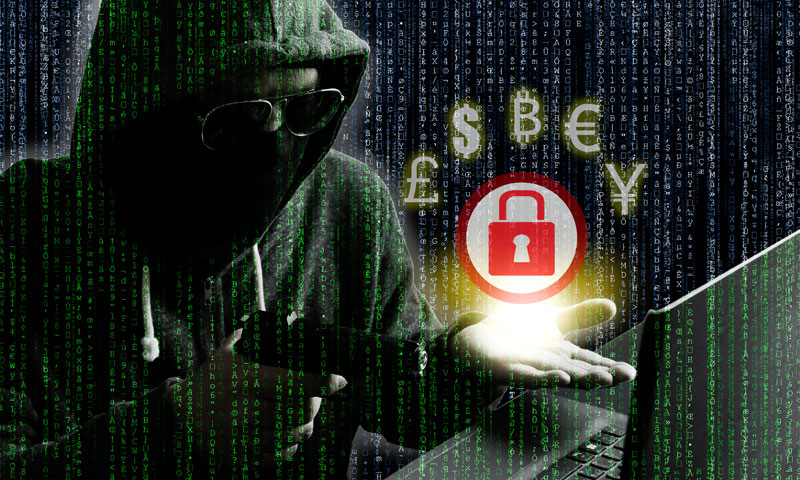YouTube introducing robots to monitor users and ransomware freezing networks in increasingly sophisticated ways in 2017
This year, YouTube and Google have taken perhaps the most important steps in their fight against defamation and hate speech: both companies are enhancing their algorithms in an effort to curtail extreme videos, fake news and articles inciting hatred. The other hemisphere of the Internet, however, is experiencing an unprecedented diffusion of content reducing viruses, which take advantage of the vulnerabilities of computer systems to maximize their ability to generate profits. Both of these developments concern the online community to a great extent this year and, while these changes may appear completely isolated, they have, in fact, very important lessons for the directions the Internet is taking, as the established systems of the online world are increasingly detached from the concept of ‘free Internet’ and need regulation by law.

To see this matter more clearly, we need to understand why these events are important. As I mentioned in my earlier blog posts, YouTube and Google have set themselves the aim of efficiently removing hate speech and defamation as well as other extreme written materials and images. Rather than employing a rule-based yet subjective manual procedure involving human labour, they have developed an automated system of removing offensive content before it is even flagged as such. This gives YouTube perhaps the fastest filtering system that has ever existed: it can quickly analyze the approximately 400 hours of content uploaded every minute and remove 75% of the deleted content even before it is flagged by any user as offensive. In developing this practice, YouTube has worked with several NGO’s to define the standards for its algorithm in order to better understand what content represents a global problem. Google also lays special emphasis on limiting content that may not be infringing but is concerning; for example, it places videos promoting extreme religiosity and superiority in what it calls ‘limited status’. YouTube’s spokesman explains that the video-sharing website will neither suggest nor monetize such content and will also disable options such as comments for this type of content. It should be noted that this promising intervention of introducing such strict filtering is likely to have been prompted by the cancellation of contracts by major brands such as Pepsi, Walmart and Johnson & Johnson. These companies did not wish to appear surrounded by extreme content.
While the above news may have been specific and of interest primarily to those well-versed in the mechanisms of the Internet, ransomware has been hot news everywhere in the media, globally and in Hungary alike. The spread of the viruses Wannacry and NotPetya made headlines for weeks and alarming facts emerged about the networks falling victim to them. Overall, these viruses caused USD 4 billion in damage, and blocked the servers of, among others, the Ukrainian government and the pharmaceutical firm Merck, as well as the radiation monitoring system in Chernobyl. Interestingly, the two viruses generated these sums not for their authors. WannaCry collected only USD 149,545 and NotPetya even less, USD 11,181 for releasing the blocking. Even though the former virus was spreading for a long time, companies and private individuals were less and less willing to pay the ransom for releasing the blocking. Instead, they mostly sought help from data recovery firms or else simply relinquished their data. This form of cybercrime is increasingly referred to as ‘doxing’, which includes stealing the data and using them for harassment as well as blackmail. A recent example of such a crime was the stealing of 1.5 Terabytes of data from HBO, namely the latest episode of Game of Thrones, which the criminals then used for blackmail.
The perpetrators of these globally spreading attacks are a subject of constant guesswork but no specifics have emerge about them yet. Many experts believe that the state of North Korea is behind the WannaCry virus and that NotPetya originated from Russia.
These two cases are clear examples of the directions in which the Internet is evolving and the divergence of the threats. As a platform, the Internet is vulnerable in terms of the content available on in, while as an architecture it is sensitive to the attacks on its systems. And while these two problems are different in nature, they do offer an insight into the diversity of errors in the online space. They demonstrate that the Internet community is exposed to remarkable changes, which necessitate systemic solutions. It is unclear what shift in content regulation would be desirable: Google’s rules remain fundamentally within the frameworks of civil law, but it decides the criteria for defining offensive content by its own discretion. Internet companies can thus decide which approach or philosophy to follow in their content rankings and which organizations and advertisers they are willing to accept guidance and demands from. In this case, they adopted the views of their large corporate customers in order to keep their profits. A certain degree of state regulation is also necessary, but this raises the question of over-regulation and the possibility that market competition might be curtailed as a result. On the other hand, the spread of ransomware is highlighting the vulnerability of networks globally. Today, even international diplomacy is concerned with hacker activities, which raises the question of ‘public safety’ on the Internet. Slowly but surely, these attacks are entering in the everyday life of private individuals even though we still consider these threats as distant from us. But a collapse of systems that operate hospitals and infrastructure are genuine threats to public safety.
Overall, these two trends both represent high risk, albeit to a different degree. One risk concerns the curtailment of rights and the democratic freedom of expression, while the other may cause problems in protecting Internet users in society through an absence of obligatory protection by the state.
Author: Árpád Varga